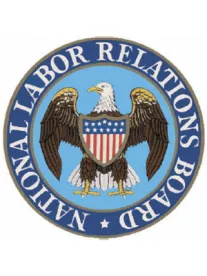On July 10, in Venetian Casino Resort, LLC v. N.L.R.B., the D.C. Circuit Court of Appeals ruled that a resort and casino operator’s call to the Las Vegas Police Department, asking it to take action in response to union demonstrators trespass on its private property, was protected by the First Amendment and did not violate the National Labor Relations Act (“Act”). The Court’s decision vacated a decision by the National Labor Relations Board (“NLRB” or “Board”), in which the Board found that the act of calling the police in those circumstances unlawfully interfered with employees’ rights under the Act.
Court Reject’s NLRB’s Narrow Reading of the First Amendment
The events leading to this appellate decision happened 16 years ago, in 1999, during a demonstration that was part of a union campaign to organize workers at the then recently opened, Venetian Casino Resort in Las Vegas. When more than 1,000 demonstrators set up shop on the Venetian’s property, they were asked to leave. Only after the demonstrators refused to heed the trespassing notice did the resort ask the police to intervene. In response, the union filed unfair labor practice (“ULP”) charges with the NLRB alleging that the company had interfered with the demonstration and employees’ rights in violation of Section 8(a)(1) of the Act.
The employer argued that its actions did not violate the Act, and were in fact protected by the petition clause of the First Amendment of the Constitution, which protects “the right of the people… to petition the Government for a redress of grievances” and the Noerr-Pennington doctrine interpreting the petition clause. The Board, which did not issue a decision until 2011, rejected the employer’s argument, holding that Noerr-Pennington only applied to “petitions [for redress] that seek the passage of a law or rule, or a significant policy decision.” In other words, in the Board’s opinion, only formal, substantive petitions were worthy of protection under the First Amendment.
Fortunately for employers and property owners, however, the D.C. Circuit Court of Appeals rejected the Board’s narrow reading of the First Amendment and Noerr-Pennington, holding that the company’s “request that the police officers at the demonstration issue criminal citations to the demonstrators and block them from the walkway” fit “squarely within the traditional mold of a [protected] petition to government.” In adopting the reasoning previously relied upon by the Ninth Circuit Court of Appeals in Forro Precision Inc. v. IBM Corp., 673 F.2d 1045 (9th Cir. 1982), the D.C. Circuit noted that these types of petitions must be protected because they help ensure “the free flow of information to the police.”
Remand to the NLRB for Further Consideration
Notwithstanding this meaningful victory, the Court’s decision does not provide final resolution of the ULP charges. Specifically, the Court remanded the case to the Board with direction that it consider a question not previously addressed: whether the Venetian’s request for police intervention was a sham. If the Board determines that the petition was a sham, i.e., that it was “objectively baseless,” then the request for police intervention would not be entitled to the protection of the First Amendment under the Noerr-Pennington doctrine. Given the Board’s penchant for looking at employers’ actions and motivations with a good deal of doubt, it is reasonable to anticipate that the Board will take a close look at the matter for any grounds to discredit the request for police intervention.
The Conflict Between Employer’s Property Rights and Employees’ Section 7 Rights
While the Court’s holding offers some encouragement and relief to employers seeking to protect their property and respond to interference with business and operations, unfortunately, it appears likely that the Board will continue its expansion of the ability for unions to engage in organizing, demonstrations and related activities on private property and for employees to use employer property in the exercise of their Section 7 rights. As the Board demonstrated in its decision this past December in Purple Communications – which reversed the Board’s earlier Register Guard decision and provided employees new rights to use employer’s email systems for organizing and other concerted activities – when it comes to “balancing” employers’ property rights and the rights of employees under the Act, the current Board often finds that the Boards before it gave too much weight to the rights of property owners, generally at the expense of the rights of employees and the unions that represent or seek to represent them.
In fact, since at least 2010, the Board has signaled its intent to rebalance the rights of employers/property owners and organizing rights more in favor of employees and unions. In 2010, in Roundy’s Inc., a case with questions concerning when and whether nonemployee union organizers have the right to come on employer property and whether those rights should be expanded, the Board invited interested parties to submit amicus briefs indicating that it was reexamining issues concerning union rights to demonstrate and organize on private property in light of the Board’s Register Guard decision. While the Board has not issued a decision in Roundy’s (although the case has been fully briefed for 4 ½ years, as noted above), Register Guard and its reasoning was rejected by the Board majority when they decided Purple Communications.
What Does All of This Mean for Employers?
The Venetian decision has significant implications for employers who have, for years now, dealt with a Board that is intent on rebalancing parties’ rights. If nothing else, the ruling should provide some solace to employers who are faced with the need to protect their property. Even still, the decision is not a cure all and employers must be careful not to read the holding too broadly. Indeed, the Court was quick to point out that the decision does not protect employers who petition for redress of a grievance involving a matter in which they have no judicially cognizable interest.
Thus, the ruling does not conflict with Sure-Tan, 467 U.S. 886 (1984), where an employer violated the Act when it reported its employees (who were engaged in union activity) to the then Immigration and Naturalization Service. The important point of distinction to keep in mind is that the employer in Sure-Tan “did not invoke the INS administrative process in order to seek the redress of any wrongs committed against them” while in this case, the Venetian sought to protect its private property rights against trespassing demonstrators.
Additionally, employers are cautioned that even though the DC Circuit has provided the Venetian with a victory, as repeatedly demonstrated in its adherence to the D.R. Horton/Murphy Oil anti-arbitration theories, this Board has exhibited its willingness to continue to advance its position in spite of Circuit Court admonishment.
Finally, with the continued uptick in union organizing activity engendered by the Board’s adoption of the Amended Election Rules that took effect this past spring, it makes sense for employers to review their policies and practices concerning public and other non-employee access to their premises and their protocols for dealing with trespass and attempts to gain access for non-business related purposes. As the D.C. Circuit’s remand in Venetian Resort suggests, it is important that response plans are objectively based and proactively address the matters of employee and union access in light of the latest guidance not only from the Board, but from the courts as well.




 />i
/>i


